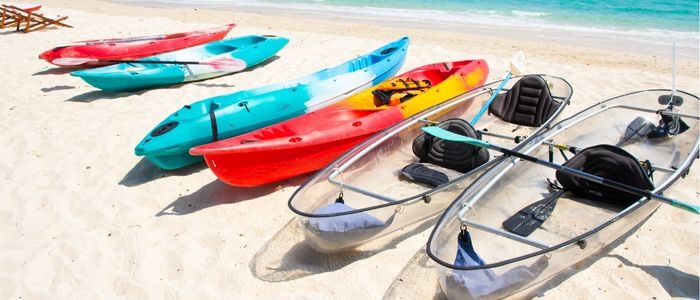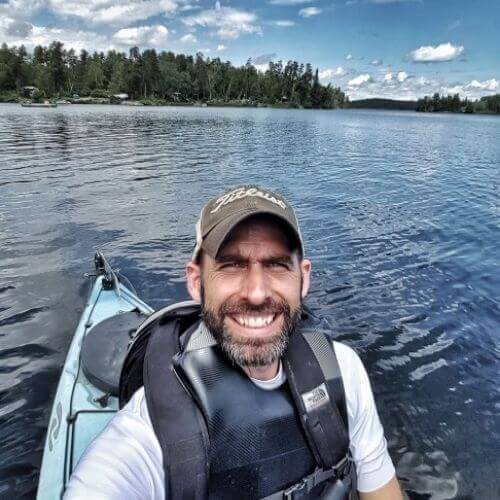
Cleaning your kayak isn’t just wiping it clean with a wet cloth. There are many different parts of the kayak that you need to clean thoroughly if you want it to stand the test of time. Therefore, you need to know the suitable cleaning agents, the type of cloth, and all the other details. Moreover, you need to know which parts need to be cleaned every time you take out your kayak and which ones only need maintenance once in a blue moon.
So, whether you are new to the kayak field or an old friend, you must learn how to clean a kayak correctly and effectively. In this guide, I will tell you exactly how to do so. Furthermore, I’ll also discuss the importance of cleaning kayaks and what helps prolong their shelf life. So let’s begin!
Kayaking is a hefty investment. However, it can drastically improve your well-being and health; therefore, you should maintain your kayak so that your investment does not waste. Cleaning and maintenance may seem tedious at times, but it’s essential to maintain the integrity of your vessel and improve its longevity.
Saltwater can cause a lot of damage to the kayak; to its deck cord, handles, bungee rigging, seat material, and lifejacket – you’re putting it at risk of destruction. Getting rid of dust and dirt is vital to extend the kayak’s lifespan and maintain it in top condition.
It doesn’t matter if you just rinse it down or do a complete cleaning session; remember, it’s essential to dry it before moving it into storage. Otherwise, you’re putting your kayak at risk of mold and mildew buildup inside the cockpit or on the kayak’s hull.
Here are some compelling reasons and benefits of kayak cleaning:
Only a few tools are required to clean your kayak.
Once you have all your cleaning tools, it’s time to start. To make things easier for new kayak owners, I’ve explained the cleaning process step by step. Let’s go!
Begin by setting up your kayak stands. You need to place them in a location where the kayak would receive the most sunlight while you clean it. I only recommend Kayak stands because they will keep grass and other debris off the kayak once it gets watered down.
It would help if you started by cleaning the cockpit and deck. After cleaning it out, flip the kayak around when it is time for the hull to be cleaned. Moreover, it will also save you from bending too low to clean your kayak thoroughly. This will make cleaning the kayak more effortless and more comfortable.
It would be easier to clean the kayak if you cleared up the dust and dirt beforehand. But, often, when these loose particles get wet, it becomes messy to clean them all up. So, get a shop vacuum to remove as much dirt as possible.
During the initial cleaning, kayakers focus on the storage hatches and cockpit. These areas are more difficult to extract water from, so it is best to clean them when they are dry.
A garden hose is the best way to clean your kayak. You can spray your kayak with a higher pressure to loosen any scum, dirt, or debris. Moreover, you should thoroughly rinse the cockpit, deck, and hull. Also, you can open the storage hatches in your enclosed kayak and give them a quick rinse, regardless of whether you are using a sit-inside or sitting-on-top.
Some kayakers prefer to use a cleaning solution to clean the compartments instead of spraying water on them. Overall, your goal is to get your kayak wet to move on to the next step. However, it would help to spend more time applying water pressure to areas with more significant dirt and debris.
Many waterways harbor bacteria, microbes, and invasive species that can attach to your kayak’s hull. A thorough cleaning is necessary to prevent them from being transferred from one body of water to another. Hence, using a cleaning solution can be helpful. To ensure maximum effectiveness, make sure you follow the instructions that came with your cleaning solution.
You can mix mild detergent and warm water in small containers if you don’t have the right cleaning solution for kayaks. Then, use a sponge or small cloth to clean your kayak’s corners and crevices. You need to clean the kayak footrests, bungee rigging on the deck, the entire length of the hull and gunwales, inside the storage compartments, and finally, the cockpit.
Additionally, you can also use a fiberglass stain remover if you have pond scum or rock snot buildup (if you have a fiberglass kayak). This remover is not abrasive, but it can be strong and should only be used with gel-coated finishes.
Now do a second rinse to remove the cleaning solution and any other debris you may have picked up during your scrub. To complete the task, flip the kayak upside down. This will allow you to drain any excess water from your cockpit.
You may need to raise your kayak from the bow or the stern if you have a sit-inside cockpit or any other style to get water out from the cockpit. But, first, make sure that you rinse your kayak thoroughly. You need to repeat this step until you notice that the water is clear and free of soapy residue.
Grab your cotton or microfiber towel to wipe down your kayak. Next, you may need to use your bilge pump to drain as much water from the cockpit as possible. You can also use a dry sponge to get the last bit of water out. Moreover, you can use either process/tools to drain excess water from the storage compartments and footrests of sit-on-top kayaks.
Lastly, use a sponge or a thick towel to remove excess water from the kayak seat or any other parts that are more susceptible to water absorption.
Now it is time to dry your kayak, so let it dry out in the sunlight. Before moving it to your storage area, your kayak needs to dry outside for approximately 4 to 6 hours.
If you are in a hurry, use a leaf blower. You can use it to quickly dry the deck or hull if you want to remove any water after wiping it down. Moreover, it can also speed up drying your kayak seat and storage hatches by using.
You can also move the kayak into your garage. Place a small fan near your kayak to speed up the drying process.
Kayaks are easy to maintain. This is likely true when compared to a motorboat. However, one of the most important components to maintain in the latter is the motor. Luckily, kayaks do not have engines that can fail. Accordingly, all you need to do is make sure it is squeaky clean.
Yet, kayaks have skegs, hatches, tow lines, bungees, paddles, rudders, etc. Your investment will slide into disrepair if you don’t clean and maintain your kayak and its components. However, you can avoid all of this with a little bit of effort.
Here are steps you can take to maintain your kayak and improve its longevity:
After a day on the water, cleaning your kayak is essential. This will eliminate any dirt, mud, or salt accumulated on your kayak’s hull. You can also scrub your kayak with mild soap and water to ensure no buildup. A more thorough cleaning is recommended when paddling on one body of water and then kayaking on another.
You will likely spend many hours paddling in sunny conditions. However, you can take steps to protect your kayak against the harmful UV Rays(UV) from the sun.
Kayak covers are a wise investment that will protect your vessel from the sun. These covers are made to protect the entire kayak. Cockpit covers are also available to protect the interior.
Kayaking offers so many incredible adventures. Hence, it is wise to take care of your kayak as part of your kayaking practice. And, now you have an understanding of how to clean a kayak.
It takes minimal effort to clean, protect, store, and maintain your kayak correctly and effectively. Kayak cleaning will ensure that it looks good, performs well, and lasts many years. It would be best to clean your kayak at least once every two weeks to keep it in top condition.

Hey there kayak lovers! I’m Jay Schwartz, the author here at Kayak Guidance! You know water sports – you know me! My life is all about it. Kayaking, Paddleboarding, Fishing, Snorkeling and so much more. I love to share my passion and knowledge with all of you.

Hey there kayak lovers! I’m Jay Schwartz, the author here at Kayak Guidance! You know water sports – you know me! My life is all about it. Kayaking, Paddleboarding, Fishing, Snorkeling and so much more. I love to share my passion and knowledge with all of you.

Welcome to KayakGuidance.com! If you’re looking to have some fun outdoor water adventures, then you have come to the right place. We help our readers find the best kayaks and water related equipment to help you have the best time of your life whenever you are engaging in water activities.
This site is a participant in the Amazon services LLC associates program, an affiliate advertising program designed to provide a means for sites to earn advertising fees by advertising and linking to Amazon.com.